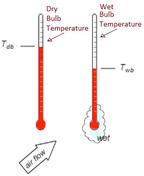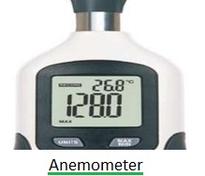Advantages and Disadvantages of Anemometers
Advertisement
This article explores the pros and cons of using anemometers, devices primarily used for measuring wind speed and air temperature. They also find applications in HVAC systems for assessing air conditioner airflow.

Figure 1: An example of an anemometer from MECO instruments pvt. ltd.
Anemometers come in two main categories: velocity anemometers and pressure anemometers. Velocity anemometers are further classified into several types, including:
- Cup anemometers
- Vane anemometers
- Laser Doppler anemometers
- Hot-wire anemometers
- Ultrasonic anemometers
- Ping-pong ball anemometers
Pressure anemometers are divided into plate anemometers and tube anemometers. Each type has its own unique set of advantages and disadvantages. Below, we’ll examine the general benefits and drawbacks of using anemometers.
Benefits of Anemometers
Here are some of the key advantages of using an anemometer:
- Versatile Measurement: Anemometers can measure various wind-related parameters, including wind speed, wind pressure, wind velocity, and wind direction. This versatility makes them valuable tools in numerous applications.
- Precise Readings: They are known for delivering accurate and reliable measurements, which is critical in fields where precise data is essential.
- Low Power Consumption: Many modern anemometers are designed to operate efficiently, requiring very little power. This is particularly beneficial when using battery-powered, portable devices.
- Variety of Options: Anemometers are available in a wide range of shapes, sizes, and designs. This variety ensures there’s a suitable model for almost any application, from handheld devices to more sophisticated meteorological instruments.
Drawbacks of Anemometers
While anemometers offer many advantages, there are some disadvantages to consider:
- Vulnerability to Strong Winds: One significant drawback is that strong winds can potentially damage the instrument. Proper care and appropriate installation methods are necessary to safeguard against such damage, especially when deploying them in exposed environments.
- Limited Accuracy in Turbulent Conditions: Strong gusts or highly variable wind conditions can cause inaccurate or inconsistent readings.
- Requires Regular Maintenance: Moving parts can accumulate dirt, dust, or ice, requiring frequent cleaning and calibration for accurate performance.
- Affected by Location and Mounting: Improper installation, obstructions, or surrounding structures can lead to incorrect wind speed readings.
- Power Dependency (for Digital and Ultrasonic Types): Some modern anemometers require a continuous power source, making them less suitable for remote or off-grid applications.
Advertisement
 T&M
T&M 



